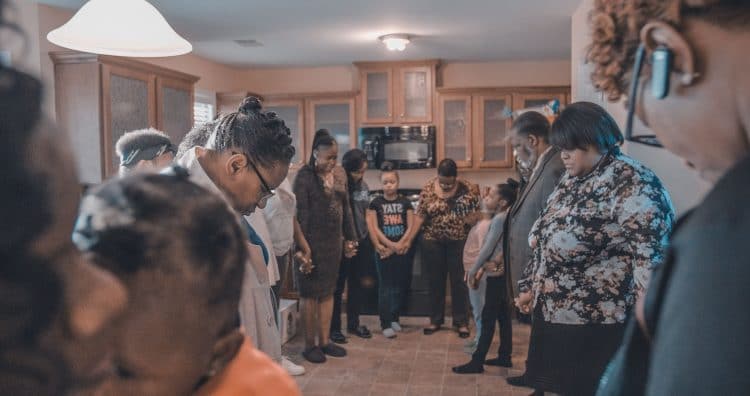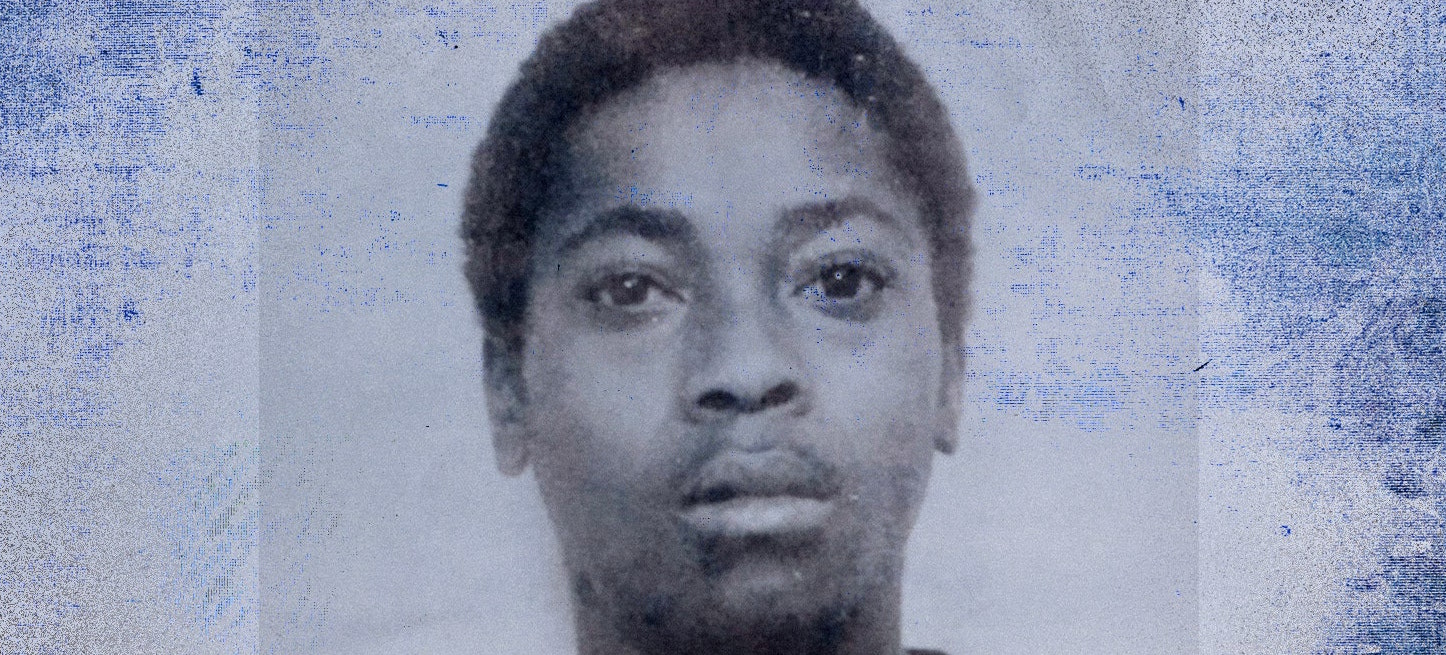via GQ
GRIFFIN, Ga. — In the final weeks of her life, Viola Coggins-Dorsey saw into the future.
The 76-year-old had been sick for years, after her diabetes led to kidney failure. By February 2016 she’d all but stopped eating and been admitted to Emory University Hospital. One night, as her daughter Telisa queued up the patient’s favorite song—a twangy gospel track called “Cooling Water”—Coggins-Dorsey made a stunning proclamation.
“They found out who killed Tim,” she declared. “What, mama?” Telisa replied, convinced she’d misheard.
“They found out who killed Tim,” Coggins-Dorsey repeated insistently. “I ain’t gonna be here for it, but they’re gonna get who killed Tim.”
For three decades, the October 1983 murder of 23-year-old Timothy Coggins, the fourth of Coggins-Dorsey’s eight children, had haunted not just his family but all of Spalding, this rural farming county 45 minutes south of Atlanta. Coggins’s mutilated body—stabbed dozens of times, with an “X” like the Confederate battle flag carved into his abdomen—was found in Sunny Side, a poor white part of the county, beneath a massive oak known colloquially as “the Hanging Tree.” But investigation into his slaying had gone nowhere, effectively abandoned by the sheriff’s department after just two weeks. The Coggins family had long ago given up any hope of closure, and at this point rarely discussed the particulars of the case. Her sick mother, Telisa reasoned, was just talking out of her mind.

Younger than Tim by two years, Telisa was the sibling with whom he was closest. He’d taught her to ride a bicycle, and to navigate her way home from the grocery store on her own. When Telisa gave birth to her first child at 18, Tim was the first to burst into the room to congratulate her. Her brother was funny and outgoing, Telisa told me. He loved to party and would stay out late into the night with old friends or new ones he’d picked up over the course of an evening. Tim was a man with an irresistible smile who had never met a stranger.
She’d been with her brother at the People’s Choice club—a brick building tucked around the bend of a quiet country road, painted black and tan with an inviting red sign—on the night he disappeared. Back then, on the Black side of Griffin, the largest city in Spalding, it was the place to be on a Friday night. The club had a fully stocked bar and hot barbecue for sale. A tightly packed jumble of bodies filled the room, drawn in by a steady stream of Aretha Franklin and Marvin Gaye and, in the fall of 1983, a lot of Michael Jackson. The dance floor brought out the depths of Tim’s charm. He could typically be found at the center of the action, stealing the show. And in recent weeks he’d been seen swaying with a young white woman—a scene that stood out among the almost exclusively Black club-goers.
Even in the 1980s, interracial dating was frowned upon in Spalding, where a local Klan chapter still held regular rallies and parades. Carrying on with a white woman might be fine for a Black man up in Atlanta, but change comes slower down here. Tim, at least one family friend had warned him, was flirting with danger.
As Telisa made her way to the club’s bathroom that night, she overheard people saying that there were white men outside asking for Tim. Moments later came the last time she’d see her brother alive, as he followed one of those men outside.
No one even realized that Tim had gone missing afterward. It was typical for him to disappear for a few days at a time. He knew everyone around town, so the safe assumption was that he was crashing on someone’s couch. Two days passed before sheriff’s deputies showed up in the neighborhood holding out gruesome photographs and asking if anyone recognized the dead man who was in them. Telisa Coggins insisted that she did not. She didn’t want to admit what she’d known immediately: It was Tim.
The sheriff’s department conducted a cursory investigation of the murder and assured the Coggins family that they would get to the bottom of the crime. But before long, the months had stretched to years, and then into decades.
“I think they always knew who did it. But because it was a white man who killed a Black man, they didn’t care. They never really tried,” Telisa told me recently. The family soon began receiving threats: a bloody T-shirt left in the school bus their stepfather drove each morning, a brick through the living room window with a note warning, “You’re next,” a decapitated dog placed in the hallway of their home. “We knew from the beginning that he had been killed because he was Black.”
Neither the crime nor the threats were ever solved. And no one in the Coggins family had any expectation they ever would be. But then, in 2017, about one year after Coggins-Dorsey made her deathbed prediction, the district attorney’s office called.
The sheriff’s department now knew who killed Tim, the voice on the other end of the phone told them. The investigation had been reopened. After all of this time, investigators vowed they would deliver justice.
In the rural regions of the state, major crimes are handled by the Georgia Bureau of Investigation, which has 350 investigators. Every six months, the agency cycles its unsolved cases, even those that are decades old, to new investigators in the hope that fresh eyes spot something—which is how, in 2016, the long-abandoned Timothy Coggins case file landed on the desk of Special Agent Jared Coleman, a studious young investigator in his second year at the agency.
He was immediately struck not by what was included in the relatively thin file but, rather, by what wasn’t. Police interviews had pointed toward two men: Frankie Gebhardt and Bill Moore Sr., white brothers-in-law who lived in the trailer park near where Coggins’s body was found. But although police did interview Gebhardt, neither man had faced much scrutiny. Gebhardt’s alibi presented some obvious holes, yet detectives had never followed up. And, Coleman said, it didn’t appear Moore had ever been interviewed at all.
And in recent years an inmate named Christopher Vaughn, who as a 10-year-old had been among the group of squirrel hunters who discovered Coggins’s body in 1983, had written to investigators to say that Gebhardt had admitted to him multiple times over the decades that he had committed the killing and thrown the murder weapon down the well behind his trailer. The first confession had been in a comment Vaughn overheard at a party, not long after the killing. But on later occasions, as Vaughn grew older, Gebhardt would bring up the killing, Vaughn claimed. To Coleman’s shock, those leads had prompted almost no follow-up.
“The case really hadn’t been fully dived into since 1983,” said Coleman, who was struck by just how close the trailer park where his major suspects lived was to the out-of-the-way place Coggins’s body had been found. When he finally interviewed Moore, Coleman found him evasive: The man claimed to have never heard of the gruesome murder that had for years been the talk of the town. “I could tell that he wasn’t telling the truth,” said Coleman.
Coleman approached the recently elected local sheriff, Darrell Dix, a tough-talking boulder of a man eager to strengthen the department’s relationship with the county’s Black residents. Dix had been troubled, not long after his election, to discover documents suggesting that at the time Coggins was killed, a number of the department’s deputies were active members of the local Klan—raising questions in his mind as to whether the failure to solve Coggins’s murder was not just a failure of police work but, rather, deliberate complicity. Dix assigned a deputy to work with Coleman, and encouraged the men to figure out once and for all who had killed Coggins.
They revisited the crime scene, an open field tucked between corn fields in the shadow of a towering power line, and compared what they saw to the photos taken at the time of Coggins’s murder. He’d been stabbed dozens of times and dragged behind a truck along the power line. It was clear his killing was carried out with personal animus: Coggins had been tortured and left to die.
“The death of Mr. Coggins,” Coleman would later tell me, “was very clearly a lynching.”
According to a recent estimate by the Equal Justice Initiative, thousands of Black Americans were lynched in the decades between the Civil War and World War II—with Georgia second only to Mississippi in raw numbers killed. These brutal extrajudicial killings, often staged as wicked public spectacles, took place across the country but were especially pronounced in the south, where white citizens shared both fear and resentment toward their now-emancipated Black neighbors. With American slavery vanquished, white southerners were now determined to wield indiscriminate terror to maintain a societal system of white supremacy. A quarter of southern lynchings, the EJI study found, were fueled by obsessive revulsion at the concept of sexual contact between Black men and white women.
“The miscegenation laws of the South…leave the white man free to seduce all the colored girls he can, but it is death to the colored man who yields to the force and advances of a similar attraction in white women,” the journalist Ida B. Wells wrote in her 1892 pamphlet Southern Horrors. “White men lynch the offending Afro-American, not because he is a despoiler of virtue, but because he succumbs to the smiles of white women.”
Eventually, these lynching spectacles died out. Yet white vigilante violence never fully disappeared, nor did the promise of impunity for its perpetrators. The message, codified by the shameless crimes of generations of white southerners: White men are free to steal the lives of Black men—especially those who’ve pursued a white woman.
As Coleman looked more closely at Coggins’s death, he began to see a familiar story.

JUSTICE FOR TIM COGGINS!!!

Read full story Here!






